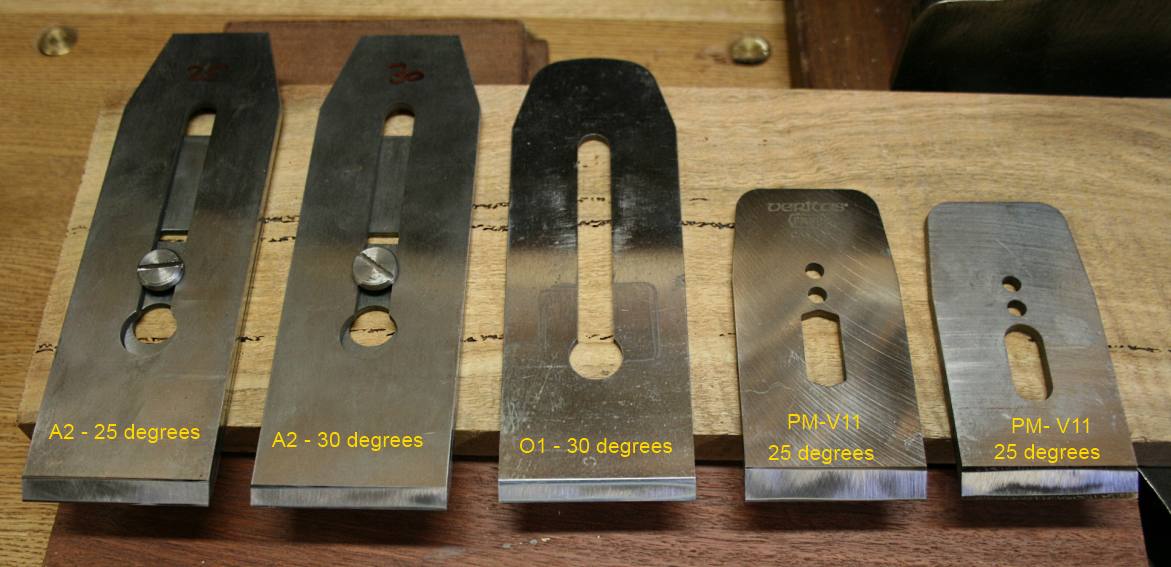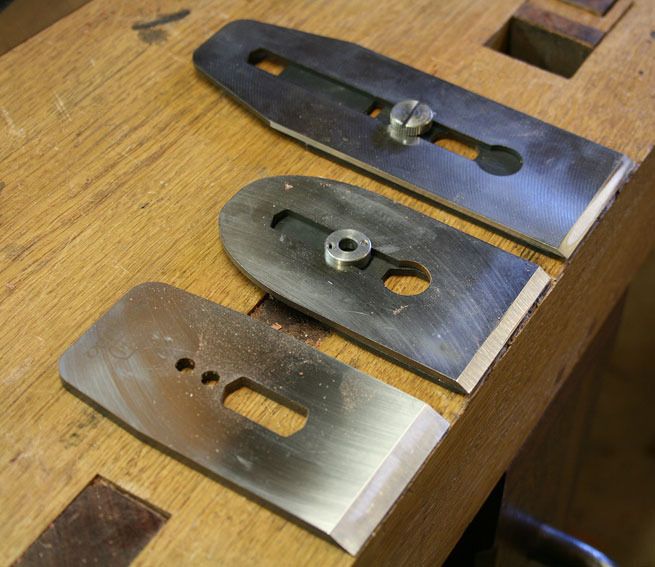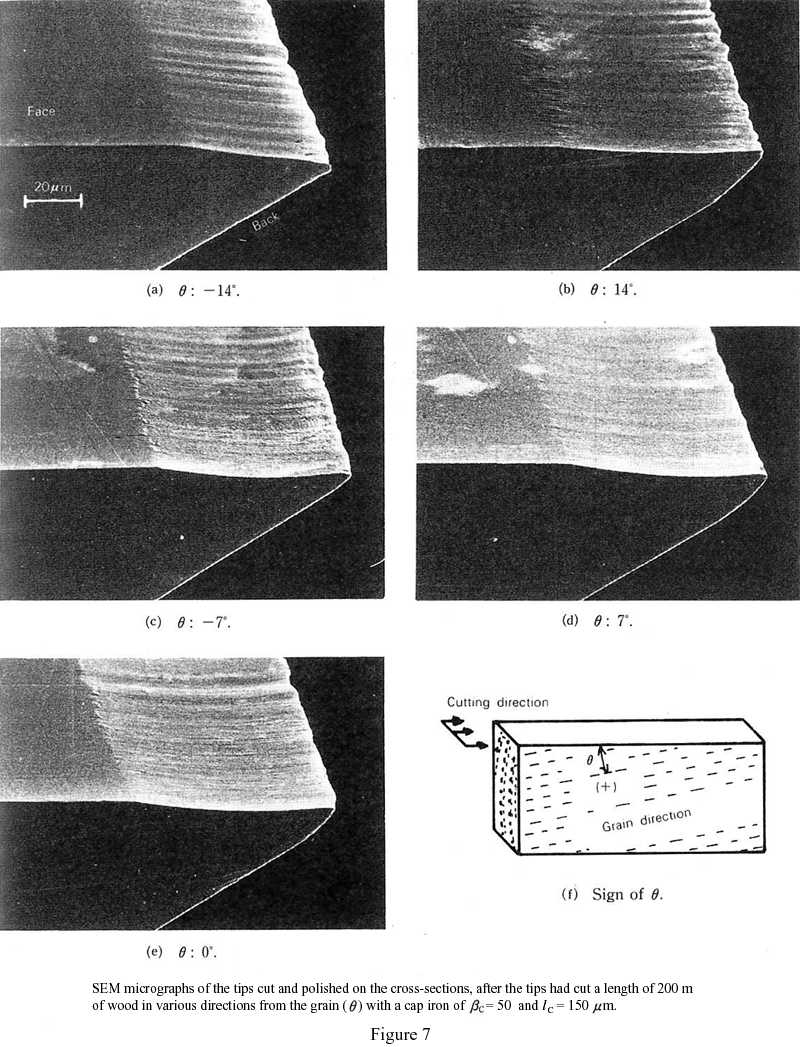Putting calculus aside for a moment, I believe there is a need to explain how this study was done. It's all written in my blog but some people don't seem to get it right. Just like most studies it's a long read and people usually jump from graphs to pictures without really reading what's there. The "no vertical force" that Patrick bring back all the time looks to be the main problem.
Description of a test after sharpening until complete:
1) plane 5 normal shavings applying whatever force is required (a normal planing)
2) check if the weight of the plane is enough to get a full shaving pushing by the sole. Yes then repeat 1. No, then test completed.
Step 2 could a be to check the blade with a microscope or something else.
By doing the check for step 2 with the weight of the plane I know that at this moment - when I cannot get a full shaving - the blade has been worn just enough so that a weight (the plane in this case but it could be 20 or 50 pounds or whatever you want) applied to the worn edge surface is not enough to engage a cut.
All the tests have been done with the same method. That means that each and every test is stopped when the same weight (the plane) cannot force the blade to take a shaving.
This study got me to realize that, when we stop planing, it's not really because the edge is dull but because the size of the flat under the blade requires that we put a lot of pressure to engage the blade - the blade skip. That flat is the real problem. If you think that it's not the case then you will have to explain why I got close to double the number of shaving at a sharpening angle of 28° compared to 34° all else being the same.
Also, can someone explain why all the old blades from Stanley, Record and Millers Falls are manufactured at 25° if the proper angle is 30-35°. I've never seen a higher angle written on any blade, did you? At the time, the whole world was using hand planes. I'm quite sure they knew what they were doing.




 Reply With Quote
Reply With Quote









